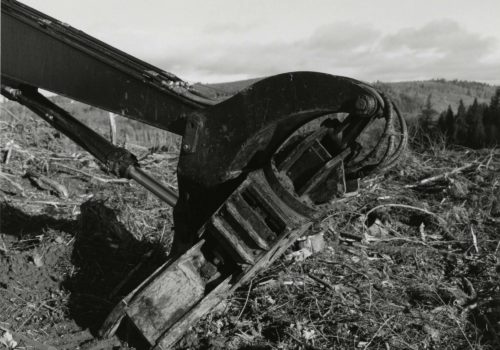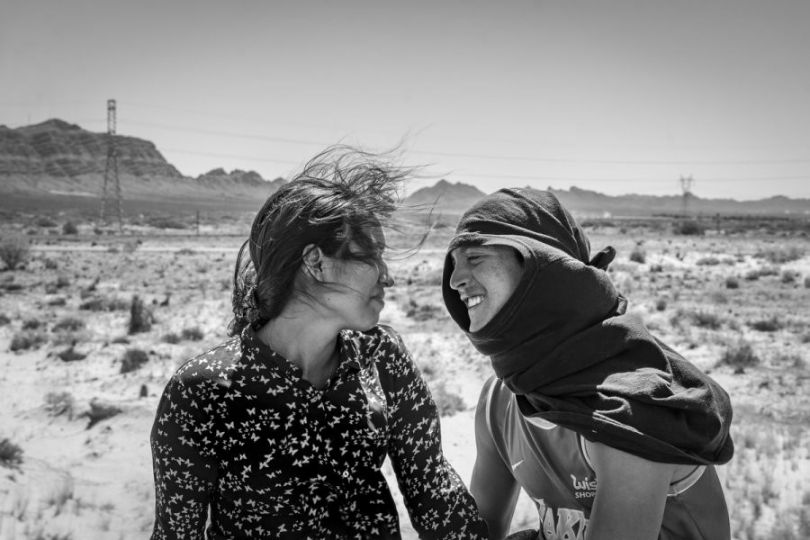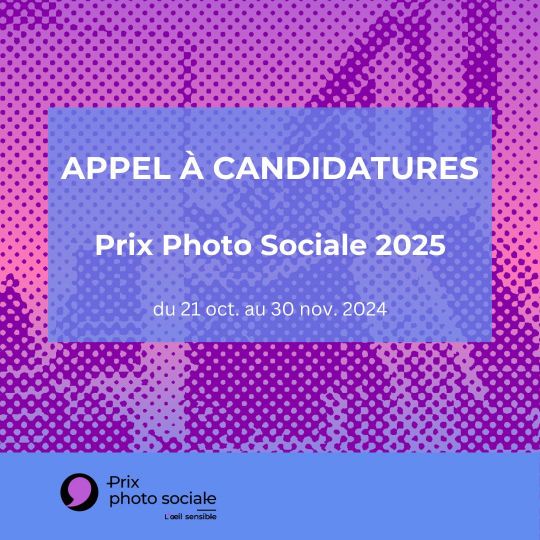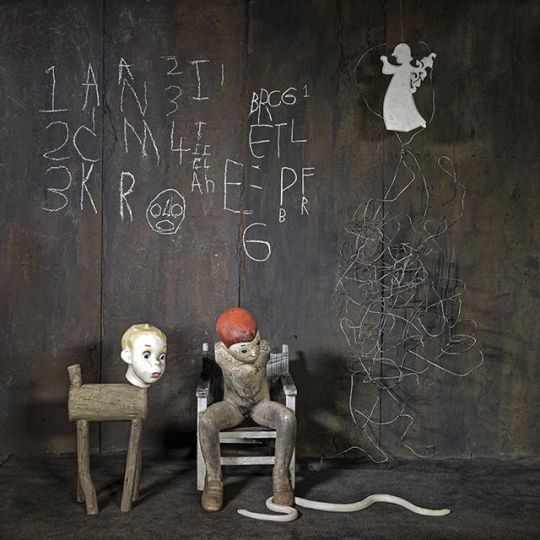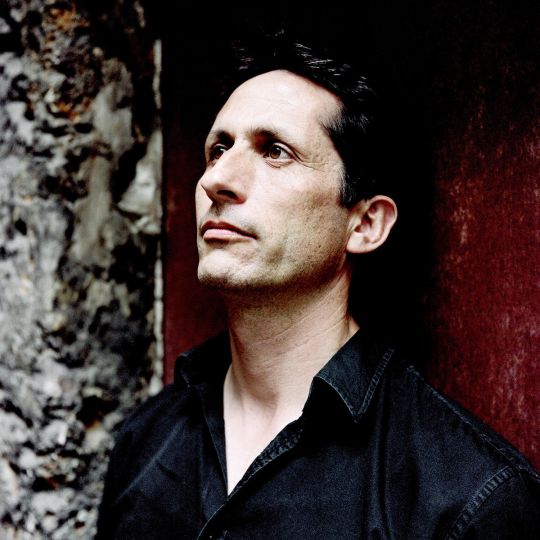Twelve Photographers from four continents on Prix Pictet ‘Power’ Shortlist.
The names of the twelve photographers, whose outstanding portfolios on the theme of Power have been shortlisted for the fourth Prix Pictet, was announced this evening in the opening week of the global photography festival, Les Rencontres d’Arles.
The twelve artists shortlisted for the fourth cycle of the Prix Pictet, the world’s leading prize in photography and sustainability, will now prepare their work for the finalists exhibition to be held at the Saatchi Gallery in London in October. The exhibition will run from 10 – 28 October 2012.
The shortlisted twelve come from ten countries on four continents: Algeria, Azerbaijan, Belgium, France, Netherlands, South Africa, Spain, United Kingdom, United States and Vietnam.
They are:
Robert Adams (United States, 1937)
Nominated for series: Turning Back, 1999
Daniel Beltrá (Spain, 1964)
Nominated for series: Spill, 2010
Mohamed Bourouissa (Algeria/France, 1978)
Nominated for series: Périphérique, 2006
Philippe Chancel (France, 1959)
Nominated for series: Fukushima: The Irresistible Power of Nature, 2011
Edmund Clark (UK, 1963)
Nominated for series: Guantanamo: If the Light Goes Out, 2009
Carl De Keyzer (Belgium, 1958)
Nominated for series: Moments Before the Flood, 2009-2011
Luc Delahaye (France, 1962)
Nominated for various works: 2008-2011
Rena Effendi (Azerbaijan, 1977)
Nominated for series: Still Life in the Zone, 2010
Jacqueline Hassink (Netherlands, 1966)
Nominated for series: Arab Domains, 2005-2006
An-My Lê (Vietnam, 1961)
Nominated for series: 29 Palms, 2003-2004
Joel Sternfeld (United States, 1944)
Nominated for series: When It Changed, 2007
Guy Tillim (South Africa, 1962)
Nominated for series: Congo Democratic, 1997-2006
The winner of the fourth Prix Pictet will be announced by Kofi Annan, Honorary President of the Prix Pictet, on Tuesday 9 October, at the opening of the finalists exhibition of the shortlisted works at the Saatchi Gallery in London.
The mandate of the Prix Pictet is to use the power of photography to raise public awareness worldwide to the social and environmental challenges of the new millennium. Launched in 2008 by the Geneva-based private bank Pictet & Cie, the Prix Pictet has rapidly established itselfas one of the world’s leading photography prizes.
The Prix Pictet has two elements: a prize of CHF 100,000 awarded to the photographer who, in the opinion of the independent jury, has produced a series of work that addresses most powerfully the theme of the award; and the Commission, awarded by the Partners of Pictet & Cie, in which a nominated photographer is invited to undertake a field trip to a region where the Bank is supporting a sustainability project.
Each year the award is centred on a distinct theme. The fourth theme of the Prix Pictet is Power, a theme with enormous breadth, embracing contradiction and paradox in equal measure that has uncovered images and issues that are both awe-inspiring and disturbing.
Professor Sir David King, Chairman of the Prix Pictet Jury, commenting on the Shortlist, said today:
First, I would like to congratulate all the shortlisted artists. But I would also like to thank all of the nominated artists who submitted their work for this cycle of the Prix Pictet. The quality of the material under review made the judging process an immensely challenging but richly rewarding experience. It is a measure of the volume and variety of first-rate photography offered to our judges that we took a considerable time to arrive at the shortlist. Inevitably there are a great many images and compelling sustainability stories that we have not been able to include on the shortlist. When the overall quality of the submissions is considered, the achievement of the twelve shortlisted artists is all the more remarkable.’
Biographies:
Robert Adams was born in New Jersey in 1937 and moved to Colorado as a teenager. Adams was a professor of English literature for several years before turning his full attention to photography in the mid-1970s. His work is largely concerned with moments of regional transition. His many books, well-known to those concerned with the American Landscape, include The New West, Los Angeles Spring, Listening to the River, West From the Columbia, What We Bought, California, Summer Nights: Walking, Gone?, What Can We Believe Where? and The Place We Live. Adams has also written a number of critical essays on the art of photography, including Beauty in Photography, Why People Photograph, and, most recently, Along Some Rivers. Among many awards, Adams has received the Guggenheim and MacArthur Foundation fellowships and the Deutsche Börse Prize in 2006. In 2009, he was awarded the Hasselblad Foundation International Award in Photography.
His most recent work, Turning Back, documents the mass deforestation of the American Northwest, where more than 90 % of the original forest has been clear-cut at least once, and efforts to restrict clear-cutting mostly failed.
Daniel Beltrá began his career in his native Spain for the Spanish National Agency EFE. The following decade, he covered hard news and feature stories as a correspondent for Gamma in Madrid. Beltrá’s work has received many international awards, including the World Press Photo in 2006 and 2007, the inaugural “Global Vision Award” from POYi in 2008, and the Prince’s Rainforest Project Award in 2009. Beltrá’s work has been published internationally in The New Yorker, Time, Newsweek, the National Geographic Society, The New York Times, Le Monde, and El Pais, amongst many others. His work has also been featured in many books on the environment and climate change. Spill documents the world’s largest marine oil spill which followed explosion of BP’s Deepwater Horizon rig in the Gulf of Mexico. Beltrá worked off the coast of Louisiana during the oil spill, where more than 600 miles of coastline were affected and show lingering signs of oil and dispersant.
Mohamed Bourouissa lives and works in France. After graduating in Visual Arts from the Sorbonne in 2004 and from the photography department of the Ecole Nationale Supérieure des Arts Décoratifs de Paris, he trained at the Studio National des Arts – Le Fresnoy from 2008-2010. Bourouissa has been awarded a number of prizes for his photographic work, including the Prix Fondation Blachère, 2010, Apt, France, the Aide à la première exposition, Cnap, 2008 and the 1st Prix – Rencontres Internationales de la Photographie, Le Off, Arles, France. His work is included in many collections including Maison Européenne de la Photographie, the Finnish Museum of Photography and the Weng Collection. Bourouissa has been developing a fine art photography practice since 2002.His series Périphérique is interested in the territories and issues of the suburbs in France where he grew up. Often considered to be the violent border of progressive society, Bourouissa places these suburbs in the field of art, treating them as a visual, conceptual object. His photographs reference historical paintings thus rendering them deeply connected to art history, and places the subjects in the vernacular of the French Revolution, each scene working to address the reality of the prejudices within society.
Born in 1959, Philippe Chancel now works and lives in Paris. He was introduced to photography at a very young age, took an economics degree at the University of Paris (Nanterre) followed by a post-graduate diploma in journalism at the Cfpj in Paris. Chancel’s work has been widely exhibited, and published in a number of publications including Regards d’artistes and Souvenirs a series of portraits of capital cities (Paris, London, New York, Tokyo, Brussels) glimpsed through shop windows, and his North Korean project, which brought him international recognition. Chancel is currently working on a new long-term project entitled Datazone that aims to explore the many-faceted aftermaths within the documentary field, revealing some of the world’s most singular lands which are recurrently in the news or, conversely, hardly ever picked up by the media radar. Fukushima: The Irresistible Power of Nature is part of the Datazone project. The series was taken less than three months after the tsunami in the Tohoku region of Northwest Japan. He travelled from the line marking the 20km red exclusion zone around the nuclear reactor to the outskirts of Miyako in search of an area left intact. The scale of the devastation caused by the tsunami and its impact recalled aspects of the effects of the atomic bomb dropped on Hiroshima, and Chancel recorded the documentary aspects in a quasi-systematic, serial manner.
Edmund Clark is best known for his imagery exploring the consequences of control and incarceration. After studying for a degree in History and French at Sussex University and La Sorbonne, Paris, he worked in international research in London and Brussels before gaining a postgraduate photojournalism diploma at the London College of Communications. Monographs include Guantanamo: If The Light Goes Out (2010) and Still Life Killing Time (2007). In 2011 alone he received the following awards, The Royal Photographic Society Hood Medal for the most outstanding photography for public service; Best Book Award at the New York Photo Awards; Best Book Award at the International Photography Awards/The Lucies; Best Book of The Year selection at the International Photobook Festival, Kassel; and Best Personal Work, Photo District News Annual. He was also nominated for the Deutsche Börse Photography Prize and International Photographer of the Year at the International Photography Awards/The Lucies. Working under military censorship, Clark’s series Guantanamo: If the Light Goes Out, explores the spaces and objects of power and control at Guantanamo Bay.
Carl De Keyzer started his career as a freelance photographer in 1982, while supporting himself as a photography instructor at the Royal Academy of Fine Arts in Ghent. At the same time, his interest in the work of other photographers led him to co-found and co-direct the XYZ-Photography Gallery. A Magnum nominee in 1990, he became a full member in 1994. De Keyzer, who has exhibited his work regularly in European galleries and museums, is the recipient of a large number of awards including the Book Award from the Arles Festival, the W. Eugene Smith Award (1990) and the Kodak Award (1992). De Keyzer likes to tackle large-scale projects and general themes. Moments Before the Flood is a visual, photographic investigation into how Europe is coping with the threat of a dramatic rise in the sea level before the end of the century as a result of climate change. The 65,000-kilometre-long coast of Europe is dotted with useless coastal defences from bygone days. Many represent enormous investments in materials and man-hours, but most never served any purpose, either because the “enemy” didn’t show up, or, when the enemy did appear, the construction proved hopelessly outdated.
Luc Delahaye is a photographer known for his large-scale colour works depicting conflicts, world events or social issues. His pictures are characterised by detachment, directness and rich details, a documentary approach which is however countered by dramatic intensity and a narrative structure. Delahaye started his career as a photojournalist. He joined the photo agency Sipa Press in 1985 and dedicated himself to war reporting. In 1994, he joined the cooperative Magnum Photos (he left in 2004). In 2001, Delahaye ceased collaboration with the press and conducted a radical formal change. His books include Luc Delahaye 2006-2010 (Steidl, 2011), History (Chris Boot, 2003), Une Ville (Xavier Barral, 2003), Winterreise (Phaidon, 2000), L’Autre (Phaidon, 1999), Memo (Hazan, 1996), Portraits/1 (Sommaire, 1996). Delahaye has won multiple awards among which are: Deutsche Börse Photography Prize (2005), Prix Niepce (2002), Robert Capa Gold Medal (2002, 1992), ICP Infinity Award (2001), Oskar Barnack Award (2000).
Rena Effendi has been active as a photographer since 2001 and from the outset, her interest has been social documentary photography. Her work focuses on themes of urbanisation, post-conflict societies, and the oil industry’s effects on people’s lives. Effendi has been the recipient of a number of awards including the ‘Fifty Crows’ International Fund for Documentary Photography competition (2004), Getty Images Editorial Photography Grant and Mario Giacomelli Memorial Fund award (2005) and the Magnum Photos Inge Morath award (2007). In 2011 Effendi received the Prince Claus Fund Award for Cultural Development, and moved to Cairo where she currently focuses on issues surrounding the Egyptian Christian minority in the post-revolution era; for this project, she received a grant from the Magnum Foundation Emergency Fund. In her series Still Life in the Zone, Effendi uses still life images and the prism of Nature Motre to portray the long-term effects of the Chernobyl nuclear accident. More than 200 people – mostly elderly women – inhabit the 30km Zone of Alienation, living in utter isolation, harvesting food that is unsafe for consumption, burning contaminated logs for warmth, while foraging the Zone’s forbidden forests for radioactive mushrooms and berries.
Following studies at the Royal Art Academy of the Hague, Jacqueline Hassink graduated from the Art Academy of Trondheim, Norway, in 1992, majoring in sculpture. Now based in New York, she is best known for her global photo art projects that deal with the world of economic power. Her work represents visual, graphic, and sociological maps of the axes of global economic structures. Her first art project, The Table of Power (1993–95), was soon followed by other projects such as Banks (1995–96), Female Power Stations: Queen Bees (1996–2000), Haute Couture Fitting Rooms, Paris (2003–10), and View, Kyoto (2004–11). Hassink’s work has been widely collected and exhibited, including shows at Huis Marseille in Amsterdam; Fotomuseum Winterthur, Winterthur; Amador Gallery and ICP in New York; Tokyo Metropolitan Museum for Photography, Tokyo; The Photographers’ Gallery and the Victoria and Albert Museum in London and the Guangzhou Museum of Modern Art, Guangzhou. Hassink’s series Arab Domains focuses on Arab women business leaders, aiming to reveal a different reality to the stereotypical images of Arab women often seen in the Western media. These women permitted Hassink to photograph their office boardroom tables and their dining tables at home.
An-My Lê was born in Saigon, Vietnam, in 1960. Lê fled Vietnam with her family as a teenager in 1975, the final year of the war, eventually settling in the United States as a political refugee. Lê received BAS and MS degrees in biology from Stanford University (1981, 1985) and an MFA from Yale University (1993). Solo exhibitions of Lê’s photographs travelled to Museum of Contemporary Photography, Chicago, SF MoMA, San Francisco, and Henry Art Gallery, Seattle, and her work has been collected by museums including the Metropolitan Museum, MoMA, the Whitney and Guggenheim museums in NY, SFMoMA and the Hessel Museum. She has been teaching at Bard College since 1998. Her photographs and films examine the impact, consequences, and representation of war. Whether in colour or black-and-white, her pictures frame a tension between the natural landscape and its violent transformation into battlefields. Projects include Viêt Nam (1994–98), in which Lê’s memories of a war-torn countryside are reconciled with the contemporary landscape; Small Wars (1999–2002), in which Lê photographed and participated in Vietnam War re-enactments in South Carolina; and 29 Palms (2003–04), in which United States Marines preparing for deployment play-act scenarios in a virtual Middle East in the California desert.
A major figure in the world of photography, Joel Sternfeld was born in New York City in 1944. He is the recipient of numerous awards, including two Guggenheim Fellowships, a Prix de Rome and the Citibank Photography Award. Sternfeld is the author of thirteen books including American Prospects (1987), Sweet Earth (2006), When it Changed (2007) and Oxbow Archive (2008). His work is represented in the collection of the Museum of Modern Art, the Art Institute of Chicago and the San Francisco Museum of Modern Art. He lives in New York City and teaches at Sarah Lawrence College. In November of 2005 Sternfeld went to Montreal, Canada to attend the 11th United Nations Conference on Climate Change, and took photographs of the participants at moments when the horror of what they were hearing about ecological collapse was most visible on their faces. These portraits are presented in his series and publication When it Changed.
Guy Tillim was born in Johannesburg in 1962 and lives in Cape Town. He started photographing professionally in 1986, working with the Afrapix collective until 1990. His work as a freelance photographer in South Africa for the local and foreign media included positions with Reuters between 1986 and 1988, and Agence France Presse in 1993 and 1994. Tillim has received many awards for his work including the Leica Oskar Barnack Award in 2005 and the first Robert Gardner Fellowship in Photography from the Peabody Museum at Harvard University in 2006. His work was included on Documenta 12 in 2007 and the São Paulo Bienal in 2006.Tillim’s series Congo Democratic trace some aspects of the individuals and institutions that have been in power in the Congo, against the recent UN-sponsored elections.

